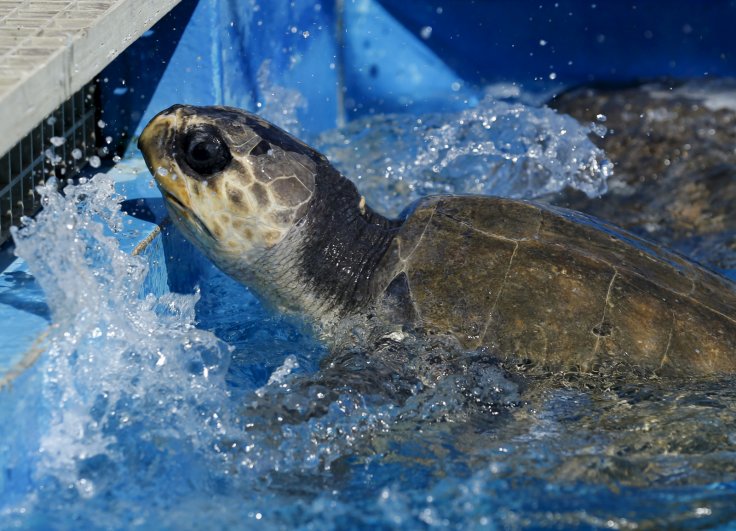
Scientists have found that sea turtles have developed a new habit of using their flippers as hands for grasping jellyfish and karate-chopping their prey.
Earlier experts believed that the reptiles could not manipulate objects with their limbs, due to their small brain structure. So it was believed that they can maximum use their flippers to swim and change directions.
But the concept should now change as a recent research at the Monterey Bay Aquarium in California showed some videos and images of marine turtles proved to be quick and skillful.
Some captured images showed that these turtles were able to karate-chop prey, grasping coral to eat the sponge clinging to its surface and rolling a scallop along the seafloor.
The research, published in the journal PeerJ, said that the researchers had identified at least eight different kinds of manipulation of the flippers including holding, striking, tossing, digging, swiping, leveraging, ponding and corralling. Scientists have also observed them lick their fingers after eating like cats and dogs.
Jessica Fujii, the lead author of the study, said: "Sea turtles' limbs have evolved mostly for locomotion, not for manipulating prey. But that they're doing it anyway suggests that, even if it's not the most efficient or effective way, it's better than not using them at all."
Science director at the Monterey Bay, Dr Kyle Van Houtan who is also a co-author of the study, said the marine turtles do not have "a developed frontal cortex, independent articulating digits or any social learning."
"And yet here we have them 'licking their fingers' just like a kid who does have all those tools. It shows an important aspect of evolution - that opportunities can shape adaptations," Houtan said.
Three three species studied by the scientists include -- the green turtle (Chelonia mydas), hawksbill (Eretmochelys imbricata), and loggerhead (Caretta caretta).
Not only turtles but several other marine species have also adopted such behaviour. Seals, manatees, walruses and sea otters were often seen to have developed flipper-like limbs.
However, Houtan said that they expected such developments in highly intelligent, adaptive social animals but when it comes to sea turtles, these changes are different.
"They never meet their parents; they're never trained to forage by their mom. It's amazing that they're figuring out how to do this without any apprenticing, and with flippers that aren't well adapted for these tasks," he said.









